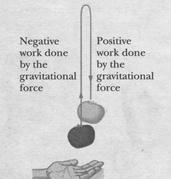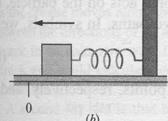
CATEGORIES:
BiologyChemistryConstructionCultureEcologyEconomyElectronicsFinanceGeographyHistoryInformaticsLawMathematicsMechanicsMedicineOtherPedagogyPhilosophyPhysicsPolicyPsychologySociologySportTourism
Potential Energy
In this chapter we continue the discussion of energy that we began in Chapter 7. To do so, we define a second form of energy: potential energy  is energy that can be associated with the configuration (or arrangement) of a system of objects that exert forces on one another. If the configuration of the system changes, then the potential energy of the system can also change.
is energy that can be associated with the configuration (or arrangement) of a system of objects that exert forces on one another. If the configuration of the system changes, then the potential energy of the system can also change.
One type of potential energy is the gravitational potential energy that is associated with the state of separation between objects, which attract one another via the gravitational force. For example, when Andrey Chemerkin lifted the record-breaking weights above his head in the 1996 Olympics, he increased the separation between the weights and Earth. The work his force did changed the gravitational potential energy of the weights-Earth system because it changed the configuration of the system - that is, the force shifted the relative locations of the weights and Earth.
Another type of potential energy is elastic potential energy, which is associated with the state of compression or extension of an elastic (springlike) object. If you compress or extend a spring, you do work to change the relative locations of the coils within the spring. The result of the work done by your force is an increase in the elastic potential energy of the spring.
The idea of potential energy can be an enormously powerful tool in understanding situations involving the motion of an object. With it we can, in fact, easily solve problems that would require careful computer programming if we used only the ideas of earlier chapters.
Work and Potential Energy
In Chapter 7 we discussed the relation between work and a change in kinetic energy. Here we discuss the relation between work and a change in potential energy.
Let us throw a tomato upward (Fig. 8-2). We already know that as the tomato rises, the work  done on the tomato by the gravitational force is negative because the force transfers energy from the kinetic energy of the tomato. We can now finish the story by saying that this energy is transferred by the gravitational force to the gravitational potential energy of the tomato-Earth system.
done on the tomato by the gravitational force is negative because the force transfers energy from the kinetic energy of the tomato. We can now finish the story by saying that this energy is transferred by the gravitational force to the gravitational potential energy of the tomato-Earth system.
The tomato slows, stops, and then begins to fall back down because of the gravitational force. During the fall, the transfer is reversed: The work  done on the tomato by the gravitational force is now positive - that force transfers energy from the gravitational potential energy of the tomato-Earth system to the kinetic energy of the tomato.
done on the tomato by the gravitational force is now positive - that force transfers energy from the gravitational potential energy of the tomato-Earth system to the kinetic energy of the tomato.

|
For either rise or fall, the change  in gravitational potential energy is defined to equal the negative of the work done on the tomato by the gravitational force. Using the general symbol
in gravitational potential energy is defined to equal the negative of the work done on the tomato by the gravitational force. Using the general symbol  for work, we write this as
for work, we write this as 
Fig. 8-2 A tomato is thrown upward. As it rises, the gravitational force does negative work on it, decreasing its kinetic energy. As the tomato descends, the gravitational force does positive work on it, increasing its kinetic energy.

|
This equation also applies to a block-spring system, as in Fig. 8-3. If we abruptly shove the block to send it moving rightward, the spring force acts leftward and thus does negative work on the block, transferring energy from the kinetic energy of the block to the elastic potential energy

|
of the spring. The block slows and eventually stops, and then begins to move leftward because the spring force is still leftward. The transfer of energy is then reversed - it is from potential energy of the spring to kinetic energy of the block.
Date: 2015-01-12; view: 1460
| <== previous page | | | next page ==> |
| Work-Kinetic Energy Theorem with a Variable Force | | | Conservative and Nonconservative forces |